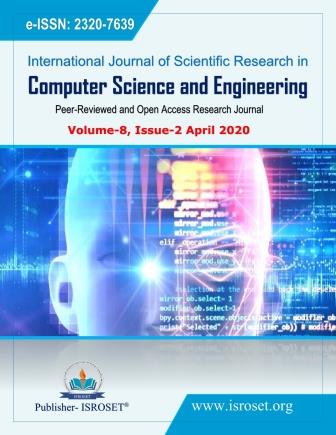An Experiment of Animation Development in Hypertext Preprocessor (PHP) and Hypertext Markup Language (HTML)
Keywords:
Animation, Conventional, Clustering, TestingAbstract
Animation is considered as an important element in Computing Industry as well as in Computing Education. This research and experiment were about the development of light animation program which implemented the usage of few web pages to create animation i.e. combination of few different images which were created using combination of Hypertext Preprocessor (PHP) and Hypertext Markup Language (HTML) scripting language. The developed program visualized the animation of a movement of an object which last for approximately TWO (2) seconds per cycle. It was found that the animation is depending on the connection speed as the web page require buffering and jumping (linking) to other web pages. This research demonstrated the usage of basic animation concept which deployed in digital means. Even so, in general, it may be considered that they were not many of animation created using both combination of PHP and HTML, especially in the education aspect. The experiment was conducted by developing a code snippet which integrate the usage of static image. This is as to reflect the usage of basic animation concept to create motion towards the human vision. There were few test cases of program requirement created in order for the code to be executed for testing.
References
A. Sharma, P.K. Misra, “Aspects of enhancing security in software development life cycle,” Advances in Computational Sciences and Technology, Vol. 10, Issue. 2, pp. 203-210.
I. Sommerville, "Software Engineering 9th Edition," Pearson, 2010.
Jr. Padal, C.M. Salado, L. Mary Jean May, N.P. Sobejana, “SPAMAST Smart Garbage Bin Monitoring System Using Wireless Sensor Network,” Journal of Engineering Research and Reports, pp. 1-16, 2019.
I.F. Amadin, E. Nwelih, “An Empirical Comparison Of: HTML, PHP, COLDFUSION, PERL, ASP .NET, JAVASCRIPT, VBSCRIPT, and PYTON AND JSP. Global”, Journal of Computer Science and Technology, Vol. 10, Issue.12, pp. 9-17, 2010.
I. Nassi, B. Shneiderman, “Flowchart techniques for structured programming,” ACM Sigplan Notices, Vol. 8, Issue.8, pp. 12-26, 1973.
U. Gulati, W. Vatanawood, “Transforming Flowchart into Coloured Petri Nets,” In Proceedings of the 2019 3rd International Conference on Software and e-Business, pp. 75-80, 2019.
I.A. Barabanova, O.J. Kravets, S.A. Tkalich, and D.I. Mutin, “Analysis of the intermediate layer work in the three-tier architecture “client-server” of automation engineering problems,” In IOP Conference Series: Materials Science and Engineering, p. 032011, 2019.
D. Mercer, “Drupal 7,” Packt publishing Ltd, United Kingdom, 2010.
R. Black, D. Graham, E. V. Veenendar, and I. Evans, “Foundations of Software Testing, ISTQB Certification,” Cengage Learning EMEA, third edition, pp 35-121, 2012.
S.S. Epps, “Discrete mathematics with applications,” Cengage learning, pp. 76-264, 2010.
A. Spilner, T. Linz, H. Schaefer, “Software Testing Foundations 4th edition,” RockyNook, p 255, 2014.
N. Honest, "Role of Testing in Software Development Life Cycle", International Journal of Computer Sciences and Engineering, Vol.7, Issue.5, pp. 886-889, 2019.
D. Goel, R. Upadhyay, “Effectiveness of use of Animation in Advertising: A Literature Review,” International Journal of Scientific Research in Network Security and Communication, Vol.5, Issue. 3, pp. 146-159, 2017.
Downloads
Published
How to Cite
Issue
Section
License

This work is licensed under a Creative Commons Attribution 4.0 International License.
Authors contributing to this journal agree to publish their articles under the Creative Commons Attribution 4.0 International License, allowing third parties to share their work (copy, distribute, transmit) and to adapt it, under the condition that the authors are given credit and that in the event of reuse or distribution, the terms of this license are made clear.







